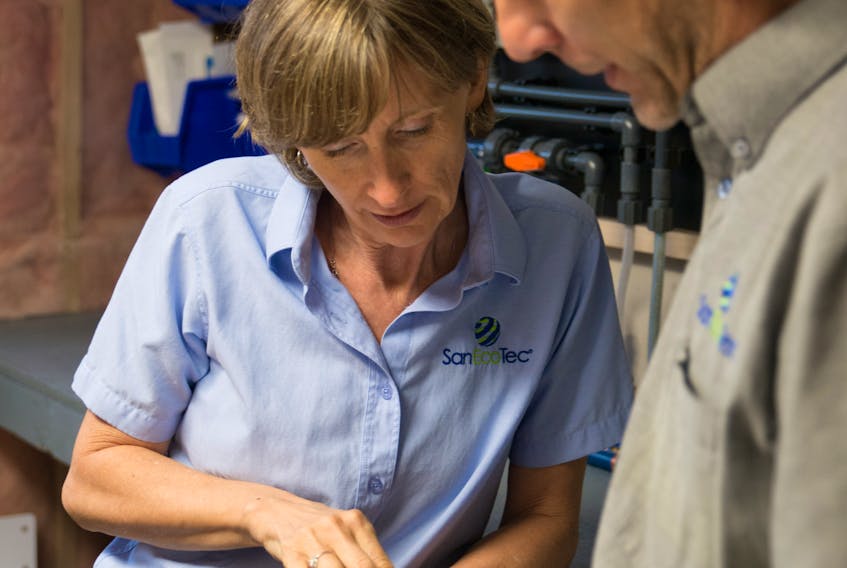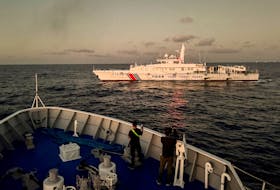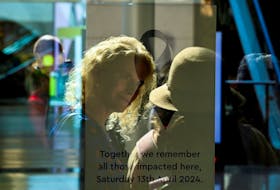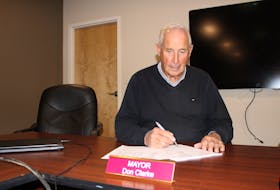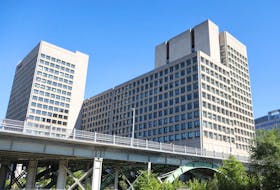An Ottawa-based company says it has an affordable solution that eliminates harmful disinfection byproducts in public drinking water supplies.
SanEcoTec says its AVIVE systems have already been trialed in two communities in Newfoundland and Labrador, with funding assistance from the province, the federal government, the communities involved and the company.
The company also has a letter from the provincial government indicating its system is now an approved technology that can be implemented in Newfoundland and Labrador.
Disinfection byproducts, such as trihalomethanes (THMs) and haloacetic acids (HAAs), are created by the chemical reaction between chlorine and organic material in the water source. They are suspected to be carcinogens and may also cause reproduction issues in people following long-term exposure.

The AVIVE technology developed by SanEcoTec does not use chlorine, so these particular byproducts are not created. Instead, the technology uses stabilized hydrogen peroxide as an effective water disinfectant.
Hydrogen peroxide breaks down as water and oxygen.
“Simply put: no chlorine, no chlorine byproducts, taste or odour,” Yamuna Vadasarukkai, SanEcoTec’s research and development manager, said in an email to The Western Star.
She said it’s not surprising many Newfoundland and Labrador towns have issues with disinfection byproducts created by chlorination. Many have water source challenges, in terms of few choices for their water supply, and limited multi-barrier approaches to keeping organic material to a minimum by the time water is chlorinated.
In addition, long, linear distribution pipelines, commonly found in the province’s water systems, give source water organics more time to react with chlorine and form toxic byproducts.
“Traditional treatment technologies to reduce chlorine (disinfection byproducts), which look at reducing natural organic matter from pond water, are either too expensive or too complex for most small communities,” said Vadasarukkai. “Multimillion-dollar, multi-barrier treatment plants such as the membrane filtration plant installed in Corner Brook are beyond the financial reach of most small towns.”
Vadasarukkai and Els Vanbeckevoort, SanEcoTec’s chief executive officer, said in a subsequent interview the company has taken many years of research and development to get the necessary approvals to begin making this safer technology available to public water supplies.
The trials in Newfoundland and Labrador were carried out in Sunnyside in the Bull Arm area of Trinity Bay and in the south coast town of Milltown in Bay d’Espoir.
They said the municipal and provincial officials they’ve been dealing with have shown a keen interest in alternative methods to chlorination for water supplies.
“The provincial government and regulators were very forthright and very proactive in looking for ways in which to bring solutions to their communities they were looking after,” said Vanbeckevoort.
She noted SanEcoTec’s AVIVE technology is relatively simple and the cost of installing it is about 1/3 to ¼ of what it would cost to implement strategies to deal with byproducts caused by chlorination.
Using stabilized hydrogen peroxide would produce odourless, fresh-tasting water that would also be less aggressive on water pipes and would extend the life of distribution system infrastructure.
The chlorine and its residuals would also not wind up being flushed back into the environment, noted Vanbeckevoort.
The company said it plans to begin educating engineering firms and others associated with doing this sort of work.
For property owners not wanting to wait for their communities to deal with any disinfection byproduct issues they might have, SanEcoTec also makes AVIVE systems for individual properties.
Using a stabilized hydrogen peroxide system could still result in some water discolouration, as additional filtration may be required to eliminate tannins, though tannins are considered an antioxidant that have health benefits.
“Chlorine was great and it may have saved many lives, but it also has negative effects,” said Vanbeckevoort. “Now, we have the means and the tools and the technology to be able to do better.”

